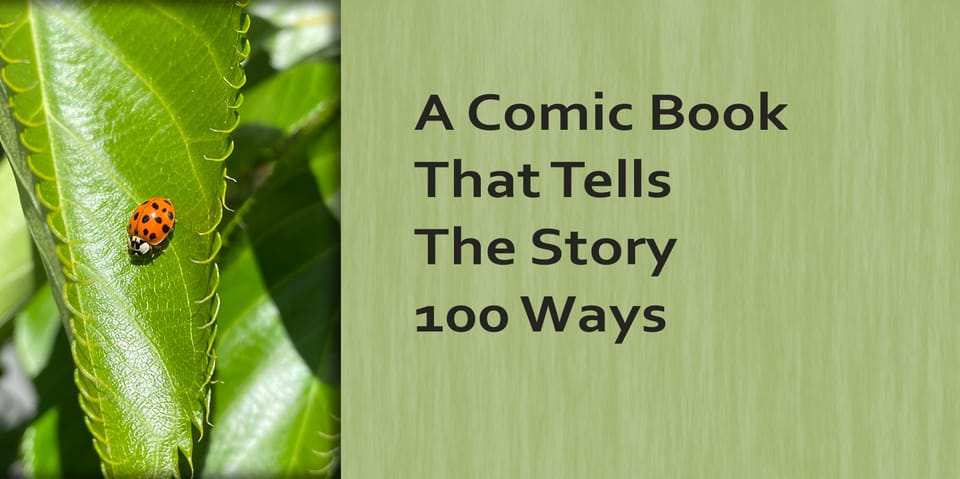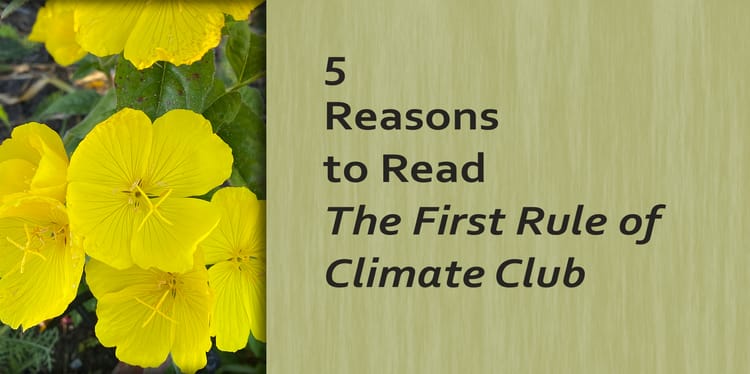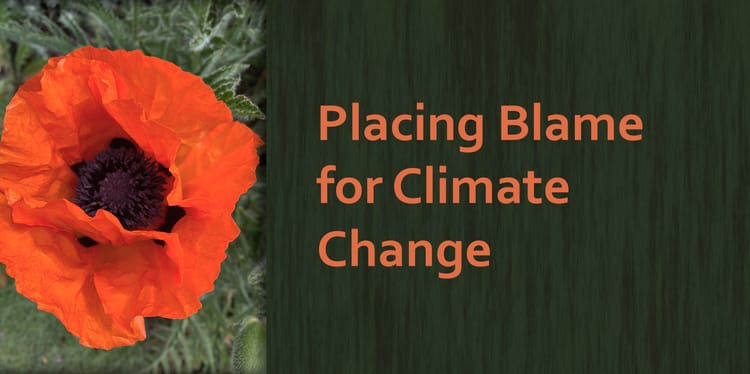A Comic Book that Tells the Story 100 Ways


When I picked up this book, I thought it was a graphic novel, which is a very popular form with younger readers. I was intrigued by the potential a graphic novel might bring to climate fiction. The Most Important Comic Book on Earth, however, is not a novel. Instead, it is a collection of 120 different comics that tackle environmental topics from political action to rewilding to regenerative farming to species extinction. Sales of this book contribute to a campaign called Rewriting Extinction that supports seven environmental projects with organizations such as Greenpeace, World Land Trust, and Born Free.
Even though this wasn’t the book I was expecting, I was fascinated by it, despite it taking a while to go through its 352 pages. Reading it slowly is really the best way to tackle it. There are so many perspectives offered on so many topics that you can’t read it cover to cover in one sitting. Sometimes even one or two pages is enough to chew on as you let the message resonate.
A comic book is like a picture book—a form that has always captured my heart. Picture books can create a greater impact by leaving most of the words out. So can a comic book. For instance, one of my favorite comics in this book is only one page. The woman on it points to layers in an archaeological dig. The lower layer holds garbage, plastic jugs, straws, spray bottles. The next layer holds medical masks and latex gloves. Above that, the layers are empty of trash. They only show soil and roots. As she stands in front of those layers, the woman speaks to a young boy. She points out the transition between the medical trash layer and the soil layer, saying, “See this my love, this is where we changed.” It’s a beautiful vision, giving you a glimpse of living in world where humans have done the right thing by turning around the climate emergency and all that goes with it—the plastic, the excess consumption. It evokes a heartwarming feeling, and it is just one illustration with one line of text.

There is a saying that a picture is worth a thousand words, and the promise of comics, or graphic novels for that matter, is their power to enhance emotions through the combination of images and minimal text. Many of these comics evoked a strong response in me. I would speculate that a complete graphic novel might leave an even greater impression.
Of course, the problem with graphic novels is the amount of time needed to create them. For the artist, it is a monumental task. It requires page after page of illustrations, and a 200-page graphic novel can take a toll on an illustrator—each page containing a panel of several illustrations—especially if they are given a short deadline to complete the work. That’s why I don’t expect to find many examples of graphic novels that showcase climate fiction with hope and heart.

In this particular comic book, though, over 300 artists and authors worked on the content, which contains many different styles and approaches to storytelling. Even so, I am sure it was a huge undertaking to bring it all together. You can see samples from the artists involved on this Instagram page. If you have time to check the book out of a library, or better yet, support the funding of these projects through its purchase, I highly recommend it.
Some pages from the book will touch your heart with tenderness or fill it with anger. Some will make you laugh or cry.
Maybe one of them will inspire you to make a difference.





Member discussion